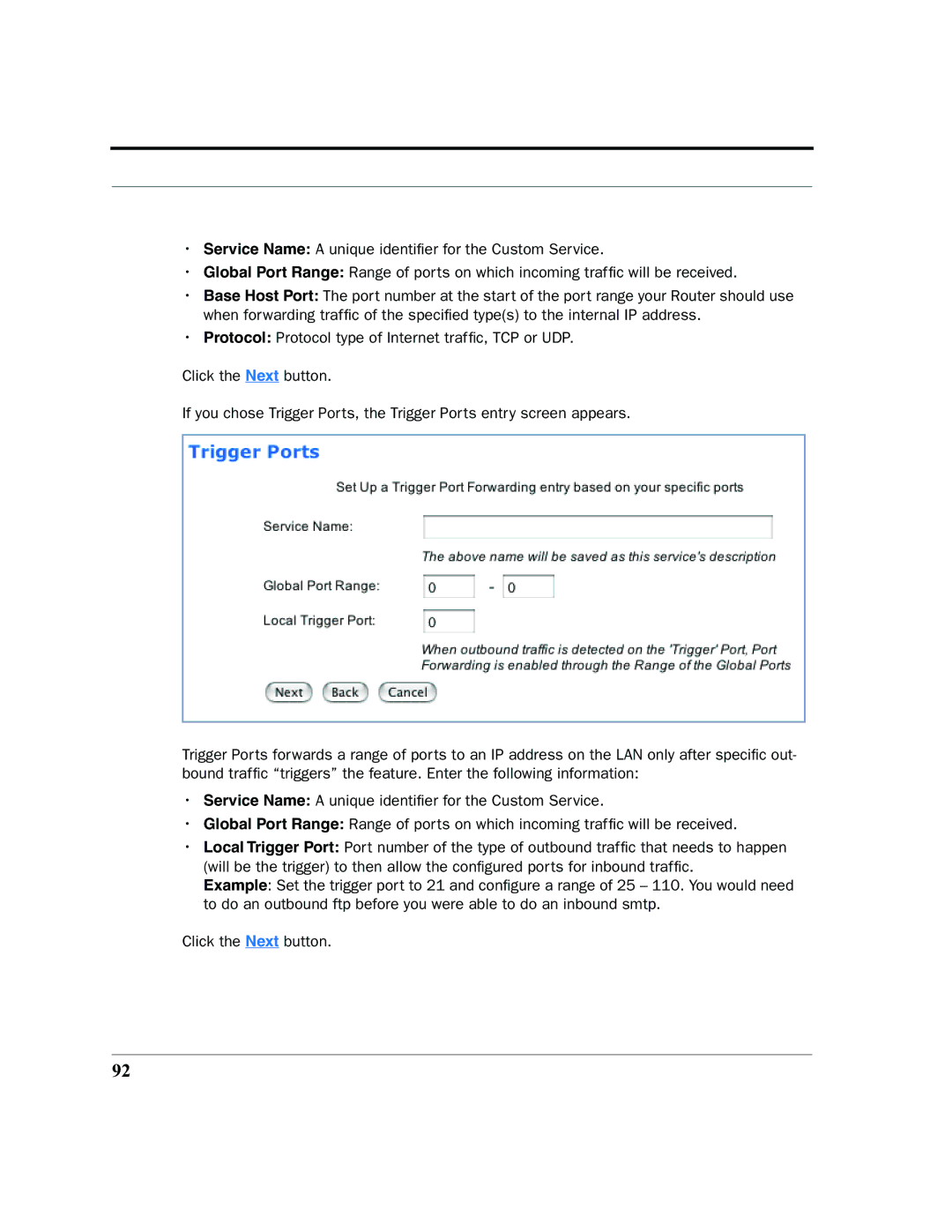
•Service Name: A unique identifier for the Custom Service.
•Global Port Range: Range of ports on which incoming traffic will be received.
•Base Host Port: The port number at the start of the port range your Router should use when forwarding traffic of the specified type(s) to the internal IP address.
•Protocol: Protocol type of Internet traffic, TCP or UDP.
Click the Next button.
If you chose Trigger Ports, the Trigger Ports entry screen appears.
Trigger Ports forwards a range of ports to an IP address on the LAN only after specific out- bound traffic “triggers” the feature. Enter the following information:
•Service Name: A unique identifier for the Custom Service.
•Global Port Range: Range of ports on which incoming traffic will be received.
•Local Trigger Port: Port number of the type of outbound traffic that needs to happen (will be the trigger) to then allow the configured ports for inbound traffic.
Example: Set the trigger port to 21 and configure a range of 25 – 110. You would need to do an outbound ftp before you were able to do an inbound smtp.
Click the Next button.
92
